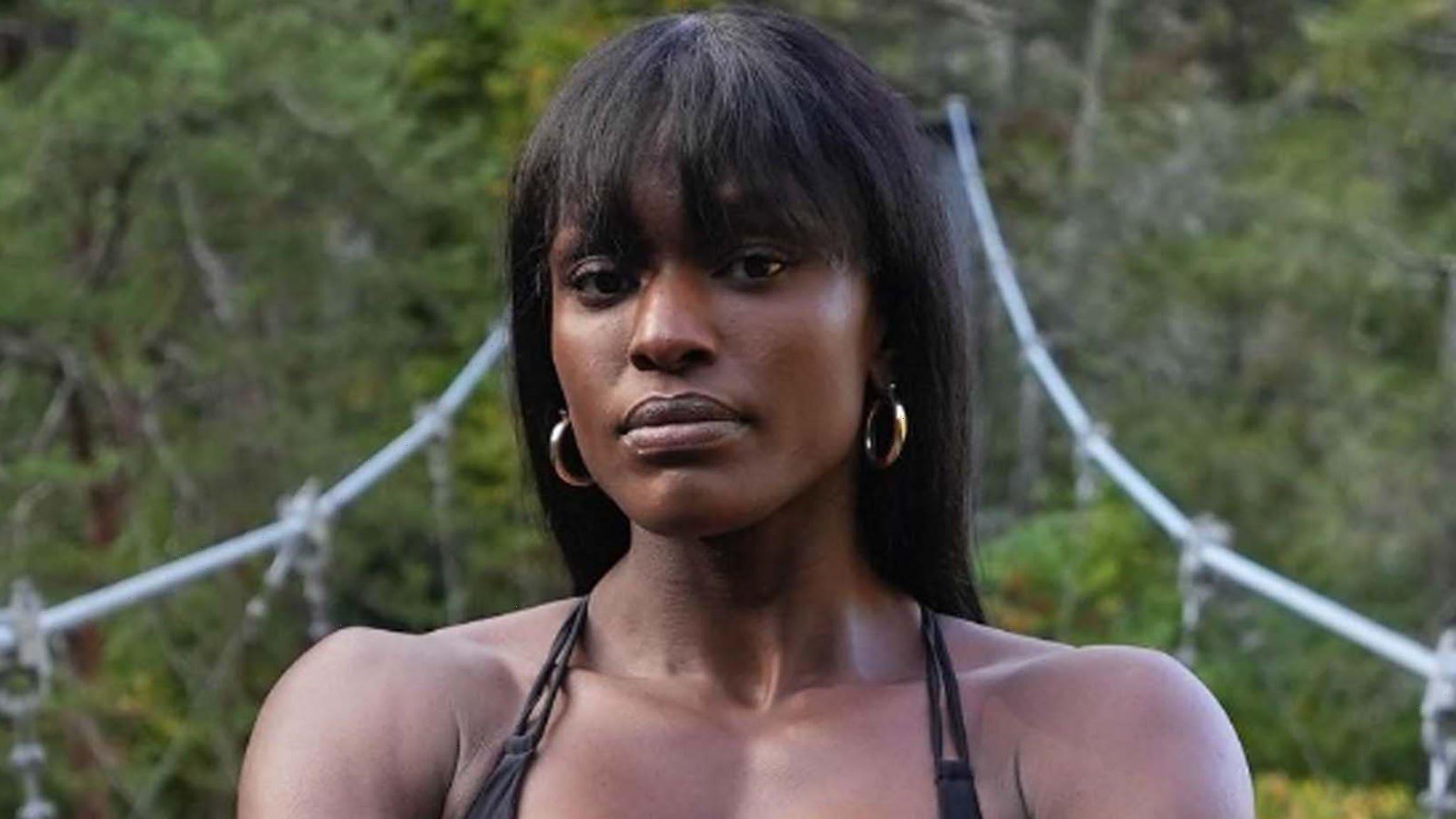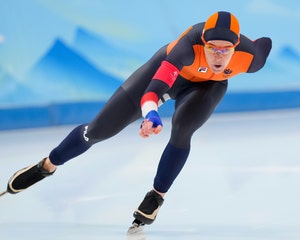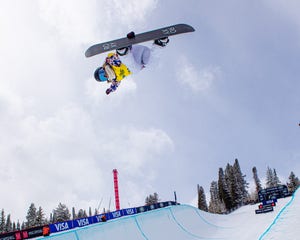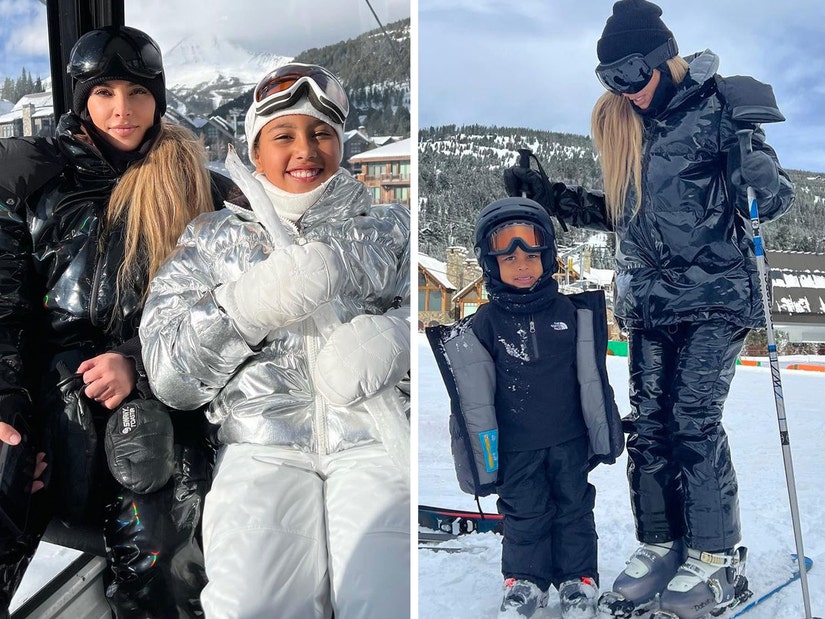Aja also opened up about her time away from competing following a ban in 2022, her thoughts on a possible Olympic return in 2026, and new documentary Citizen Athlete.
Aja Evans doesn’t let anxiety get in the way of giving it her all on the ice.
The professional bobsledder is no stranger to getting back on her feet after experiencing hardship while pursing her love of the sport. Back in December 2021 — two months before the US team was named — the Olympic bronze medalist was hospitalized after a training accident that resulted in severe facial lacerations. After spending a month in recovery, the athlete joined the Olympic team in 2022 as an alternate. Later in November of that year, Evans accepted a two year ban from USADA (U.S. Anti-Doping Agency) after unintentionally failing to provide a drug test for an out-of-competition test.
With the release of “Citizen Athlete,” produced by Reign Total Body Fuel, Evans will tell the story of her journey at the 2022 Winter Olympics alongside the rest of the US women’s bobsledding team.
Waiting for your permission to load Vimeo video.
Vimeo Video Unavailable
Read on for TooFab’s Q&A with the Olympian! (Some of the below has been edited for clarity and brevity.)
What are you most excited for America to see about the experiences of the US women’s bobsledding team with the release of Citizen Athlete?
I feel like America gets to see bobsled highlighted, you know once every four years on the big stage, and this documentary really takes a look into what it takes for us to get that 60 seconds or less on the ice at the Olympic Games. I think that’s the power in the documentary — you get to see the real people behind it. We wear helmets and ski suits, but we’re very much human beings, very much capable of catching COVID, battling citizenship and injuries. You really get an overview of all the obstacles even we could not foresee in making the Olympic team.
Back in December 2021, you were in a training accident that resulted in facial lacerations. Can you take us through the chain of events?
I mean, my accident took place when I was in Hamburg, Germany training with my team and we were at the push track … just getting in some training runs and it was my first time there but the training is pretty standard, no matter where you are. But unfortunately, I was in a bit of a fuss and I didn’t have a helmet on when I hopped in the sled and … it’s kind of like a mini roller coaster that is indoor with a wall coming up.
As its going, once I pass the time, I will usually start to cool the brakes, but I was pulling what I thought was the braking mechanism. It didn’t work. And so the sled didn’t slow down, I ran out of space and opportunity [and] kind of slammed into the wall…
Everything was kind of black from there, but my teammates were completely amazing and just the support and aid they provided during that time and just really being there for me. No competition, no Olympics. None of that mattered. They were like my sisters at that moment. That probably saved my life.
Waiting for your permission to load the Instagram Media.
Instagram Media Unavailable
How long was your recovery period? What was it like coming back to the game?
The accident happened in the middle of when I was still pursuing the Olympics…it was two months before they named the Olympic team. I had a month to recover at home and it worked out enough to where two weeks of those four were the Christmas break so I didn’t miss that much competition. I spent that time healing at home in Atlanta, mentally and physically and then doing my training there.
I rejoined the team for the second half and just did what I could to be the best teammate and athlete and support throughout the remainder of the World Cup season. And then, when the team was announced for the Olympics, they asked if I would support the team in an alternate role. You know, it hit a little hard at first because it took a lot for me to return to score after my accident as well as just my journey. I think that was the best decision I could have ever made. Taking that alternate role showed me truly what I’m capable of, especially when there’s no Olympic medal or competition…I was really there to help two rookie brakemen have the best first Olympic experience and a successful one and so I really felt like everything I learned came to that moment and I was able to help them and provide the team with whatever they needed.
How do you keep experiences like your accident from getting in your head when you’re performing?
It does get to me and I think that the best part about just acknowledging that is that I have to acknowledge that it affects me and I’m a real person and it’s something that I have to work through. Once I acknowledge that, then I can start figuring out ways to cope with those feelings in those moments.
I was experiencing a lot of new feelings in an environment where I still had to keep a competitive front. So for me, it was really good to have a supportive team outside of bobsled. I have great therapists and family. Those people really helped to encourage me to stay in the game while it was difficult and scary. They comforted me and provided what I needed in that supportive role, but honestly, I had to face my fears a couple of times, and that helped me to get past it as well. But if I didn’t acknowledge it, then it wouldn’t have been something I could get past.
The Most Decorated Winter Olympians of All Time
Are there specific steps that you usually take to get yourself out of that mental block once you’re about to get on the sled?
If there was a mental block there … One, just let it settle for a second because I think for a long time, I was triggering myself to try and act like it’s not there or think positive or force myself to think otherwise. Sometimes if you just sit in that moment, it dissipates and it isn’t as intense. So once I kind of acknowledged it and was able to get a better idea of where that anxiety and nerves were coming from, I reminded myself of all the work I put in — the hours, days, months, years to this very moment.
That’s what I rely on when it’s go time, and so nothing I do that day is going to change that, for the worse or for the better. It’s all about putting together what I’ve been working on. So knowing that I put my everything into my training and my preparation leading up to competition helps me to snap out of it when it gets difficult on game day.
Back in November, you were banned by USADA from competing for two years. When you accepted the ban, you said you’d use the time to “focus on my health and wellbeing.” How has the time away been treating you?
The time away has been great for me. As unfortunate as that situation was — again, I feel like one of the things I’ve worked through just from a personal perspective is realizing I’m human — let alone letting the world realize I’m human. So giving myself that space to focus on my mental health and focus on my inner feelings, I’ve realized I can’t be everything I need to be for everyone else. Of course the sanction is for a couple years so that allows me to focus on what I need to without worrying about competing and being what I need to for everyone else. I’m doing the most I can with the time and it’s definitely been a transformative experience for me.
5 Female Monster Extreme Snow Athletes You Need to Be Following Right Now
Are you planning on returning for the 2026 games?
I like having the option to return if I want to at that time. 2026… that’s a bit of ways away from me for right now. But, you know, I’m blessed to still have my health. I’m blessed to still have my eligibility and to even acknowledge things I needed to acknowledge to better improve my performance regarding my mental health.
I think that if I chose to compete in 2026 it would be better than any other Olympic games I’ve ever been in but you know, I can’t call it at this moment.
Is there any part of your story or experience that you reveal in Citizen Athlete that you’ve felt has been previously untold?
As an Olympian, as an athlete and a public figure, our successes or our performances are highlighted in such an extreme light that it doesn’t show the world the reality of what we go through and what we deal with, from a variety of perspectives.
This was during a time where I literally had stitches throughout my entire face and I’m in the middle of pursuing an Olympic Games and so it was a very vulnerable time for me, but I’m really proud of myself for sharing that with the world and I’m proud of the growth I had through that moment.
“Citizen Athlete” premieres this weekend at the Mammoth Film Festival.
Source: Read Full Article



